When to Expect Cacti’s Blooms
Cacti flowers are a true marvel, effortlessly brightening up any space they grace. However, for those who own these prickly wonders and eagerly await the blossoms, the journey can be endured with bated breath. Although achieving their delicate blooms may demand patience, it is not an insurmountable feat. Join us as we delve into the enchanting realm of cacti blooms, exploring the long-awaited answer to the question that lingers in our minds: When do cacti bloom?
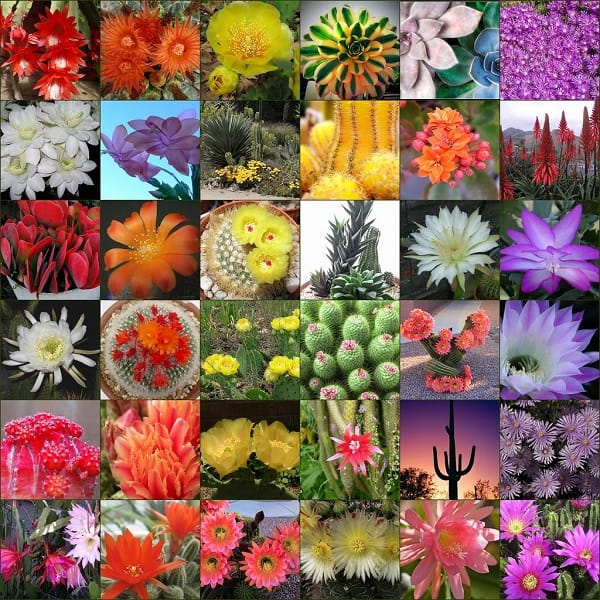
Contents
When do Cacti Bloom?
The cactus family is a rich tapestry, comprising over 200 genera and approximately 2,500 distinct species. While these remarkable plants share many common characteristics, each cactus possesses its individuality, resulting in a diverse range of blooming schedules. Factors such as climate, age, and genetics play crucial roles in determining when these captivating flowers grace us with their presence.
For the majority of cactus species, summer marks their splendid flowering season. However, nature has sprinkled its magic across the family, offering variations in bloom times. Autumn showcases the beauty of certain species, while others reserve their floral spectacle for the nighttime, like the majestic Carnegiea gigantea. In contrast, enchanting daytime blooms can be found in species such as Rebutia, Mammillaria, Copiapoa, and more.
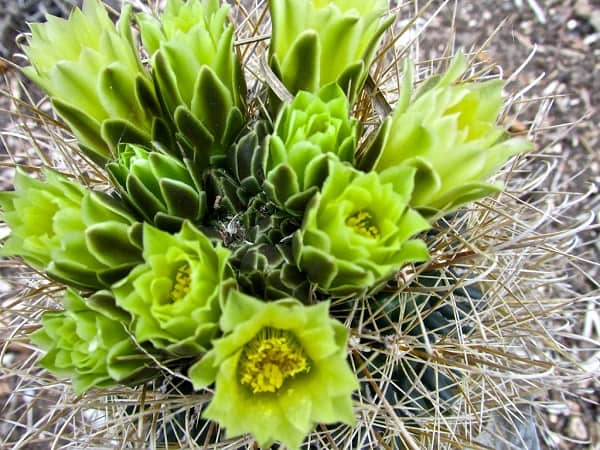
When do prickly pears bloom?
From April to June, the prickly pear cactus graces us with its vibrant yellow flowers, adorned with an orange/red core. These stunning blooms measure approximately 3 inches in width.
Following the flowering stage, the cactus leaf gives way to the growth of fruits, which can reach sizes of up to 4 inches. By August, when the fruits take on an enticing orange/red hue, they are deemed ripe and ready to be savored as a delicious treat.
9 Cactus that Grows Flowers in Spring
Cacti, belonging to the Cactaceae family, are renowned for their remarkable ability to adapt and survive harsh conditions with minimal water. But that’s not all—they also delight us with their spectacular, showy flowers from spring through winter. While it typically takes 2 to 5 years for cacti grown from seed to bloom, this waiting period can be shortened by propagating new specimens from cuttings of mature plants. This method bypasses the juvenile stage, allowing flowering to occur in as little as a year and a half. As a result, we can revel in the beauty of these stunning flowers from spring to winter.
The duration of the flower display varies depending on the cactus genus and species. Some flowers open for only a few hours, while others persist for several days, closing only at dusk. Despite their short-lived nature, these blossoms provide ample opportunity for pollinating insects to fulfill their role.
The petals of these flowers are modified leaves that facilitate evaporation of the plant’s stored water reserves. Within this captivating world of cactus flowers, you’ll find a diverse array of sizes, scents, and bloom times. Some species exhibit magnificent night-blooming flowers, reaching impressive diameters of up to 10-12 inches, while others flaunt an astonishing palette of shades, ranging from pure whites and shimmering yellows to vibrant reds, pinks, and oranges.
Gymnocalycium ragonesei
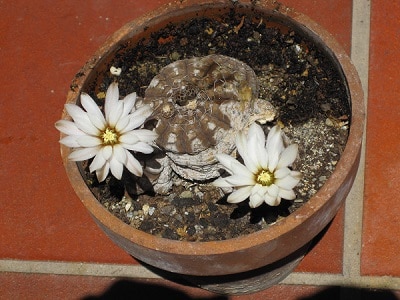
The Gymnocalycium ragonesei is a small cactus that grows slowly. The flowers bloom during the day in late spring and can stay open for about 12 days. They are white with a reddish throat, measuring up to 2 inches long and 2 inches in diameter.
To grow this cactus, you should keep it in partial or total shade as it cannot tolerate intense light. It can withstand temperatures as low as -5°F as long as the soil remains dry. It requires a low-pH soil mixture of earth, peat, and coarse sand. In the winter, it should remain completely dry. In the spring and autumn, water it every 20 days, being careful not to wet the stem. During the summer, water it weekly if the soil is dry. It can be propagated from seeds.
Parodia leninghausii
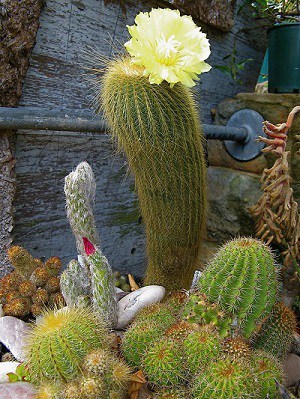
The Parodia leninghausii is a slow-growing cactus species that can reach a height of up to 31 inches and a diameter of 4 inches. It starts blooming in early autumn when it reaches a size of about 8 inches. The flowers are large, measuring up to 2 inches long, and are yellow-orange in color with silky petals. The floral tube and pericarp are covered in brown “wool” with bristles. The fruits are spherical and contain bell-shaped reddish-brown seeds.
To grow this cactus, place it in partial shade using a mixture of soil, sand, and coarse sand as a substrate. It should not be watered during the winter, but every 15 days during the autumn. In spring, water it every 10 days, and in summer, water it once a week. It can be propagated from seeds or stem cuttings.
Echinopsis arachnacantha
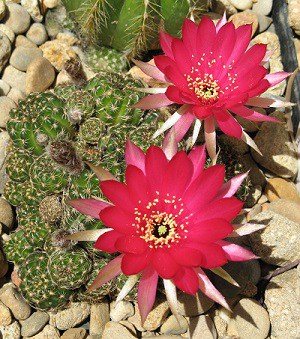
The Echinopsis arachnacantha is a cactus with a flattened to spherical body. It is dark green in color with weak ribs. The cactus grows in clusters and each flower head measures 1 to 2 inches in diameter and can reach a height of 3 to 4 inches. The flowers are showy, up to 2 inches long, and can be white, dark red, or golden yellow with reddish-green fruits.
To grow this cactus, use a porous substrate consisting of soil, pumice, and coarse sand. It thrives in full sun but partial shade is recommended during the summer to prevent sunburns. It can withstand temperatures as low as 23°F. During the winter, keep it dry. In the spring and autumn, water it when the soil is dry. In the summer, water it every 10 days. It can be propagated from seeds or by separating clusters.
Mammillaria bocasana
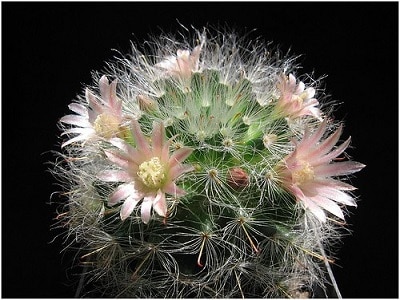
The Mammillaria bocasana is a small cactus and has fine white spines that cover numerous cylindrical branches.
The flowers of this cactus bloom during the day from spring to fall. They can be bell-shaped and come in different colors such as white, pink, or dark yellow. The fruits are pink or red.
To grow this cactus, place it in full sun or partial shade using a substrate of soil, sand, and coarse sand. It should be watered every 45 days in winter, every 15 days in autumn and spring, and once a week in summer. Propagation can be done using seeds or by separating the branches.
Parodia microsperma

The Parodia microsperma has a globose stem that can be depressed or short columnar. It is light or dark green in color and has white wool-covered areolas that disappear with age.
This cactus produces numerous yellow, orange, or red flowers during the spring-summer period, and its body is covered with hairs and bristles. It thrives in full sun using a substrate of soil and coarse sand.
For irrigation, do not water it in winter. Water it every two weeks in spring and fall, and once a week in summer. It can be propagated from seeds or by separating clusters.
Cleistocactus samaipatanus
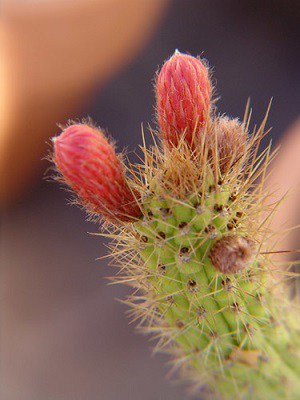
The Cleistocactus samaipatanus has a green stem that can reach a height of 10 feet and up to 4 inches in diameter. It has slightly serrated ribs with areoles covered in dense brown felt.
This species blooms during the day in the spring and summer when it reaches a size of about 8 inches. The flowers are bright red with clear edges and violet anthers. They are cylindrical and grow horizontally along the stems. The fruits are reddish and spherical, covered with white or brown wool.
To grow this cactus, use a mixture of soil, sand, and coarse sand in full sun or partial shade. It can tolerate temperatures as low as 23°F. Water it every 25 days in winter, once a month in autumn, every two weeks in spring, and once a week in summer. It can be propagated from seeds or by stem cuttings up to 2 inches long.
Echinopsis chamaecereus
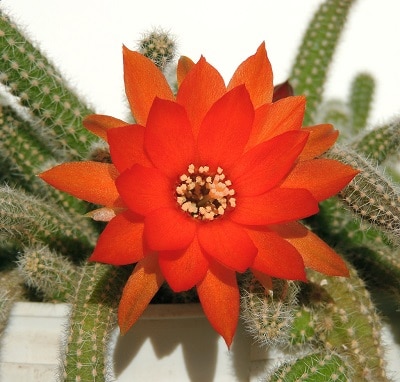
The Echinopsis chamaecereus is a resilient and prolific cactus species found worldwide. It forms erect groups initially with small light green stems covered in numerous soft white spines. In the winter, these spines turn purple. When fully grown, it reaches a height of 6 inches and a diameter of 12 inches. It produces a large number of bright red flowers in the spring and summer.
To grow this cactus, place it in full sun using a loose substrate of soil and coarse sand that allows for good drainage. Avoid watering it in winter, water it every two weeks in autumn, every 10 days in spring, and once a week in summer. Propagation can be done using seeds or by using stem cuttings.
Leuchtenbergia principis
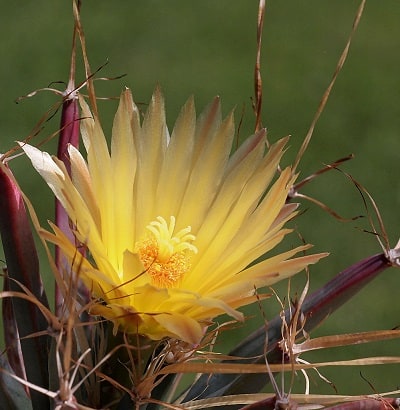
The Leuchtenbergia principis is an unusual cactus with long and thin triangular tubers that are bluish-green in color. The tubers turn reddish at the edges when exposed to high light intensity. At the end of the tuber, long papery spines grow up to 4 inches long.
Flowering occurs during the day, about 4 or 5 years after planting, from late spring to the end of summer. The flowers are scented and yellow.
To grow this cactus, place it in full sun using a substrate of soil and coarse sand. In winter, it should not be watered. In autumn and spring, water it every 15 days, and in summer, water it once a week. It can be propagated from seeds or by separating basal stems.
Thelocactus setispinus
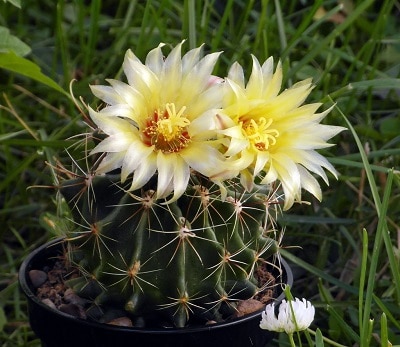
The Thelocactus setispinus is an easily recognizable cactus species with well-defined, thin, and wavy ribs. It does not have tubers and has a curved and hook-shaped central spine.
Flowering occurs during the day in spring and summer. The flowers are bright yellow with a red throat, measuring between 1.2 and 1.6 inches. It produces red and fleshy fruits with black seeds.
To grow this cactus, place it in full sun using a substrate of soil and coarse sand. It can tolerate temperatures as low as 24°F. Avoid watering it in winter, water it every two weeks in autumn, every 10 days in spring, and once a week in summer. Propagation is done using seeds.
Do All Cactus Bloom?
The first thing to know is that not all cacti produce flowers, but it is only some varieties that bloom.
Keep in mind, if there are no certain conditions necessary for them to flourish, they won’t either.
How Often Does A Cactus Flower Bloom?
The frequency of cactus flower blooms can vary depending on the specific species and growing conditions. Generally, cacti tend to bloom once a year or during specific seasons. Some cactus species may have a specific flowering period, such as spring or summer, while others may bloom multiple times throughout the year.
It’s important to note that not all cacti bloom every year, especially younger or smaller plants. Factors such as plant maturity, environmental conditions, and proper care play significant roles in stimulating flowering. Providing the cactus with appropriate light exposure, temperature, and watering regime can help encourage regular blooming.
How to Encourage Cactus Blooms
Bringing forth the vibrant blooms of a cactus may initially appear like an impossible mission. However, the mesmerizing colors of cactus flowers make them one of nature’s most spectacular creations. Here are some valuable tips to help you coax your cactus to bloom.
- Know Your Cactus: It is crucial to familiarize yourself with the specific type of cactus you have at home, as not all varieties bloom. Some cacti even unveil their petals for only a limited duration.
- Timing is Key: When purchasing your cactus, gather information about its blooming season. This will enable you to provide the right care and apply a potassium-rich fertilizer approximately one to two months in advance.
- Winter Shelter: During winter, shield your cactus from the cold and place it in a part of the house that receives ample sunlight. Winter is a period of rest for cacti, so reduce watering to once or twice a month.
- Spring and Summer Hydration: In spring and summer, ensure your cactus receives adequate watering, taking care to avoid overwatering and waterlogging. Position it in a spot with extended hours of sunlight.
- Fall’s Delicate Balance: As fall arrives, water needs decrease as the cactus accumulates sufficient reserves from previous months. If you notice your plant is excessively dry, provide a modest amount of water, but avoid overdoing it.
- Patience is Key: Don’t lose heart if your cactus doesn’t bloom immediately. These plants are slow growers, and some may take years before gracing you with their first flower. Embrace the virtue of patience to behold this natural marvel.
Fun Facts About Cactus Flowers
How long do cactus flowers last?
Cactus flowers will usually last a few hours to a maximum of one or two weeks, the least lasting being those of the Echinopsis or Lobivia, and the most durable those of the Discocactus, Coryphanta or Astrophytum.
Echinopsis flowers bloom overnight and last for only a day. They are at their peak beauty for an hour or two at most.
The flower of a cactus is made to be attractive to pollinators, which are very scarce in their natural habitat, and also to last little.
Types of cactus flowers
Cactus flowers are very beautiful, with cheerful and very decorative colors such as red, pink, white or yellow. But, depending on its shape, we can distinguish three types:
Big
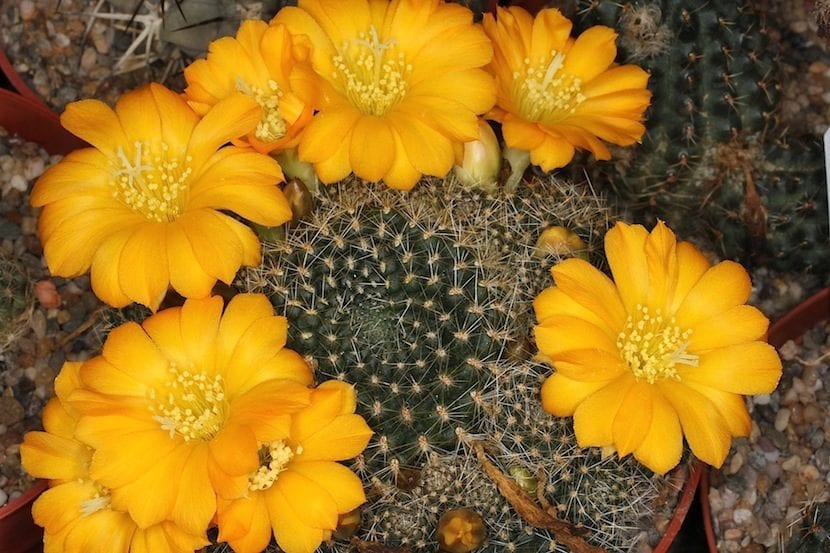
They are the most characteristic flowers of cacti and some of the most spectacular. The genera Rebutia, Lobivia or Echinopsis are the ones that produce the showiest flowers. They can measure up to 4cm in diameter.
Small

There are some cactuses that flower, like the Mammillaria, that produce very tiny flowers that barely separate a little from the mother plant. They measure less than 1 centimeter, but their ornamental value is very, very high.
Tubular

Like those of the Cleistocactus or the Oreocereus for example. These types of flowers are kept closed, only the stamens and pistil emerge a little outside. They are the ones that attract the least attention, but they are very curious. And it is that living in areas where at night the temperature drops to close to 0 degrees, and even more, if they want to multiply they need the most sensitive parts of the flower to be protected as much as possible.
